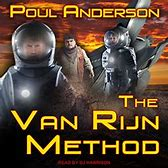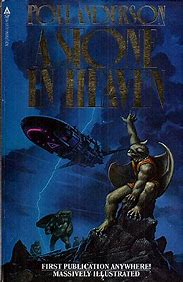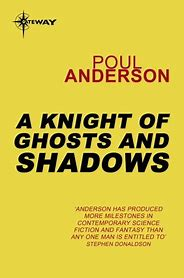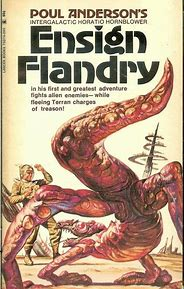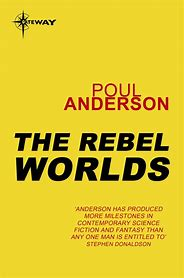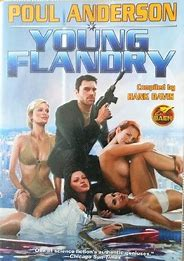A tavern song on Ansa:
"
Comrades, hear the battle tiding,"hear the ships that rise and yell
"faring outward, standard rising -
"Kick the Terrans back to hell!"
-Poul Anderson, "Sargasso of Lost Starships" IN Anderson, Rise of the Terran Empire (Riverdale, NY, March 2011), pp. 367-436 AT I, p. 369.
Draun of Highsky on Avalon:
"'We've many new-made dead this night. The more Terrans for hell-wind to blow ahead of them, the better.'"
-Poul Anderson, The People of the Wind IN Rise of the Terran Empire, pp. 437-662 AT IX, p. 547.
"'Cast them onto hell-wind!' The slug-thrower stuttered in Draun's grasp."
-ibid., XVII, p. 640.
"A platoon trotted toward Draun. He stood above [his dying son] and fired as long as he was able."
-ibid., p. 641.
Hugh McCormac's son on Aeneas:
"'Save death for the Terries, hey?' asked Bob."
An Arulian on Freehold:
"'...what can your law mean to us, Terran - ?'"
-Poul Anderson, "Outpost of Empire" IN Anderson, Captain Flandry: Defender of the Terran Empire (Riverdale, NY, February 2010), pp. 1-72 AT p. 12.
Ivar Frederiksen on Aeneas:
"'...too many of us are dead in war, while Impies tell us to change ways of our forefathers.'"
-Poul Anderson, The Day of Their Return IN Captain Flandry: Defender of the Terran Empire, pp. 74-240 AT 10, p. 154.
A Nyanzan on Brae:
"'Ai! 'List nay, they said. Nay let recruiters 'list you...damned Empire...even to gain warskill, don't 'list...shall freedom come from slave-masters...'"
-Poul Anderson, "The Game of Glory" IN Captain Flandry: Defender of the Terran Empire, pp. 303-339 AT I, p. 305.
The phrases, "Terrans," "Terries," "Impies" and "...damned Empire...," all refer to human beings. Some of us have to accept that the nationality to which we belong is hated in other parts of the world. In Poul Anderson's Technic History, members of our species are hated in other parts of the known galaxy both by members of other species and by human beings who have settled elsewhere.
Philippe Rochefort has a simple response:
"He straightened in his chair. Man is my race."
-The People of the Wind, IV, p. 487.
